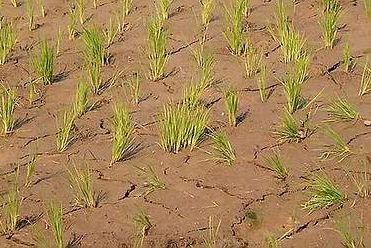Poor transplanting

What it does
Poorly transplanted plants have inadequate plant stand.
Why and where it occurs
Poor transplanting of seedlings becomes a problem when there is a shortage of labor.
How to identify
Poorly transplanted field have inadequate or uneven plant stand (e.g., plants are too far apart or missing).
This should not be confused with factors affecting crop stand (e.g., low seed rate, or poor seed distribution), and pest damage during establishment (e.g., rats, birds, snails or possibly crabs).
To confirm the cause of problem, check or ask the farmer about planting practices.
Why is it important
A good plant stand lays the foundation for good yields. The absence of a good stand automatically lowers yield potential. As labor for rice transplanting becomes increasingly scarce, farmers experience greater problems in transplanting practices.
Economic costs can be direct in terms of yield lost due to a poor crop stand with too few plants.
How to manage
- For good establishment, shift to mechanized transplanting or direct seeding if labor supplies are inadequate.
- Manage water and ensure well-leveled water, ensure an appropriate seed rate with an even distribution of seed.
- Crop stand should be in the order of 100−200 plants per m2, use seed rates between 40−100 kg per ha if other factors (e.g., pest problems and seedbed preparation) are not problematic.







